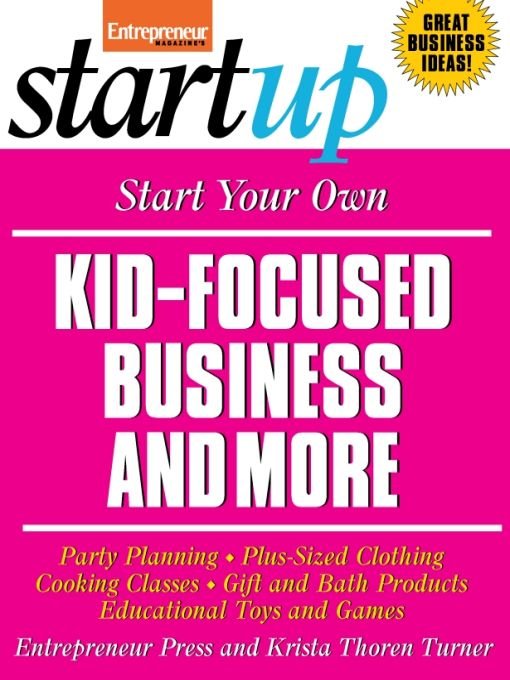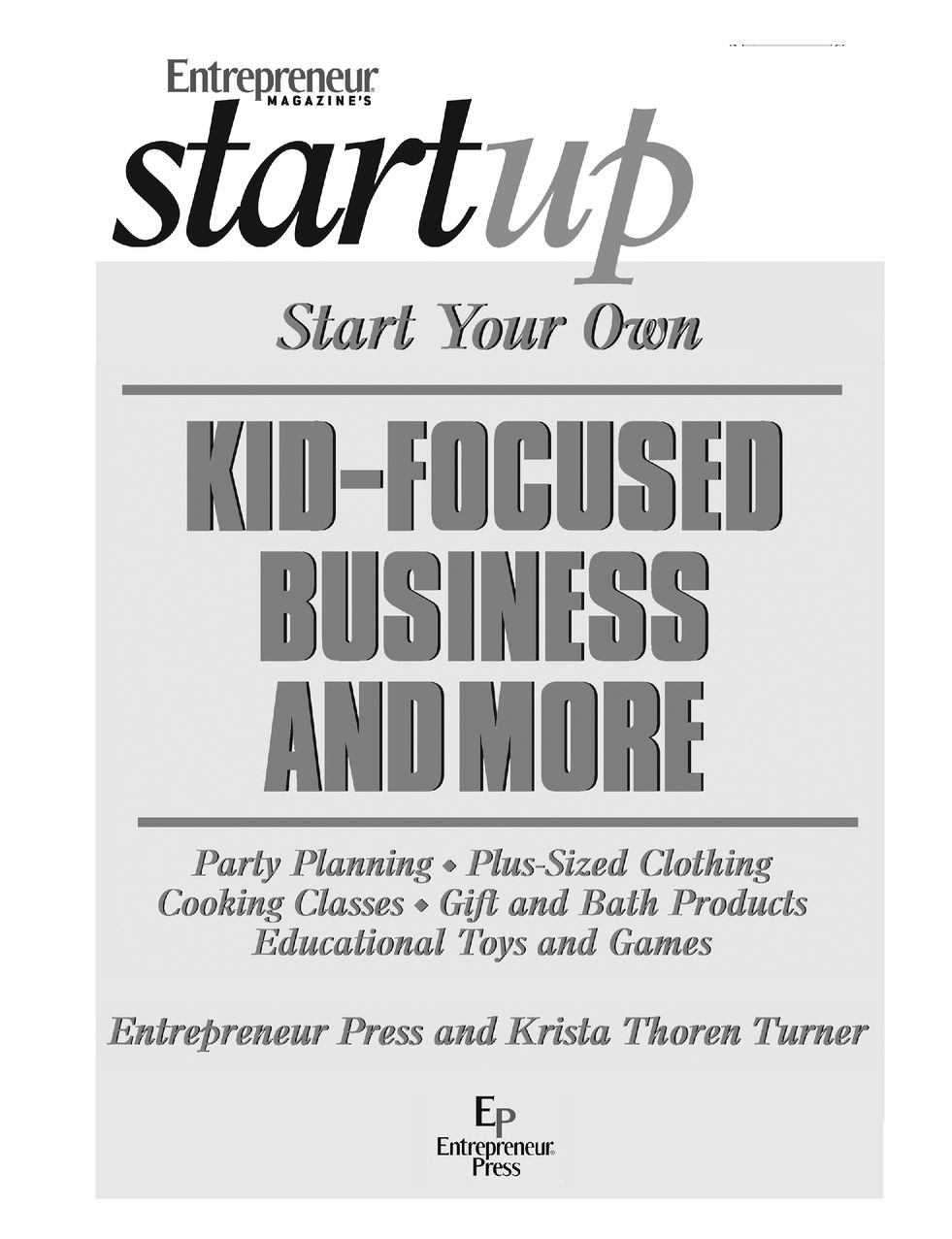Table of Contents
Additional titles in Entrepreneurs Startup Series
Start Your Own
Bed & Breakfast
Business on eBay
Business Support Service
Car Wash
Child Care Service
Cleaning Service
Clothing Store
Coin-Operated Laundry
Consulting Business
Crafts Business
E-Business
E-Learning Business
Event Planning Business
Executive Recruiting Service
Freight Brokerage Business
Gift Basket Business
Growing and Selling Herbs and Herbal Products
Home Inspection Service
Import/Export Business
Information Consultant Business
Law Practice
Lawn Care Business
Mail Order Business
Medical Claims Billing Service
Personal Concierge Service
Personal Training Business
Pet-Sitting Business
Restaurant and Five Other Food Businesses
Self-Publishing Business
Seminar Production Business
Specialty Travel & Tour Business
Staffing Service
Successful Retail Business
Vending Business
Wedding Consultant Business
Wholesale Distribution Business
Introduction
Do you fondly remember your favorite childhood toys? Do you have happy memories of long games of Monopoly or Risk? Do you find younger kids perspectives interesting and often funny? When you see older kids horsing around, do you sometimes get the urge to join in?
If you answered yes to these questions, chances are you enjoy children and the way they play. Chances are also good that youd enjoy being a part of that play time. You can achieve that by starting a kids-related business. As youll discover in this book, now is a great time to do it.
First things first, however. No matter what your background, skills, or interests might be, a solid understanding of the kids industry is crucial before you decide where your own special niche might lie. Read on to find out whether a business catering to kids might be for you.
Overview of the Kids Industry
Theres no shortage of potential customers in this industry: According to the Federal Interagency Forum on Child and Family Statistics, more than 73 million children under age 18 live in America, and this number is growing every year. Birth rates in the late 80s and 90s were the highest recorded since the end of the famed baby boom in 1964. By 2020, the number of children is projected to reach 80 million and to account for approximately 24 percent of the U.S. population.
The size of the kids population is good news. So is the fact that parents and grandparents are spending more money than ever on children. Most compelling of all, however, is the surge in kids own purchasing power.
Because of changes in the social and family roles of children, recent decades have seen sharp increases not only in kids direct spending but also in their influence on household spending. In the 1960s, an era when kids were largely expected to be seen and not heard, children influenced an estimated $5 billion of their parents purchases. Kids now influence upwards of $500 billion in household spending, including food, toiletries, and a host of other items (even the family car!) outside the traditional realm of kids products.
Fun Fact
Todays kids toy and gift market includes some incredibly upscale products. Want a rocking elephant for $400? A safari chandelier for $598? A hand-carved animal table and chair set for $3,050? How about a magical windmill playhouse for $38,000? Its all available at poshtots.com.
So how much do kids spend on products for their own use? According to research conducted by American Demographics magazine, 4 to 12-year-olds spend more than $40 billion, while teenagers (ages 12 to 19) spend $155 billion of their own money.
Theres no question children have more money of their own than ever beforeand businesses know it. Children today are the subjects of an unprecedented marketing blitz, not only on TV, but also in school. According to the American Psychological Association, Madison Avenue spends more than $12 billion a year on marketing to children. Child psychologists estimate that the average child sees 40,000 advertisements each year, and that the average 3-year-old can identify 100 brand logos.
What does this mean to you? Children are savvier consumers than ever before. They know what products and toys are out there. To make sure your business will stand out in this marketplace, you have to be sure youre providing something that kids wantand that means doing lots of research. Lets start with the following overview of the five kinds of kids businesses profiled in this book and the trends shaping each of their industries. In the next chapter, youll find more details about how to carve out a specialized niche in one of these businesses.
Trends in Kids Businesses
Each of the following kids businessesparty planning, gift and bath products, educational toys and games, plus-size clothing, and cooking classesis covered in depth in separate chapters in this book. For now, heres a quick industry analysis for each.
Kids Party Planning
This is a booming industry, especially in the teen party sector, where comingof-age parties are increasingly popular. In addition to the traditional birthday and graduation events, bar and bat mitzvahs and sweet 16 parties signal a trend toward increased celebration of kids milestones. Given the significant Hispanic population, quinceaera (age 15) parties in particular can be expected to rise in popularity.
Although no numbers exist for this market, experts predict that the industry will continue to grow, as parents provide not only a greater number of parties but also more expensive ones for their children.
Kids Gift and Bath Products
The sheer breadth of this category, which encompasses everything from books and music to fragrances, makes it a promising market.
Just to take one tiny subset of the market as an example, parents spend more than $80 million annually on baby soaps in food, drug, and discount stores (and thats not even including Wal-Mart), according to market research company Information Resources.
Consider, too, another small segment of the market: baby gifts. According to the U.S. Census Bureau, American births are holding steady at approximately 4 million per year. Multiply that 4 million by the number of gifts given per baby, and you get promising potential in baby gifts alone.
Stat Fact
According to the Toy Industry Association, toy sales increased by $300 million in a recent year. The biggest increases were in youth electronics (22 percent), vehicles (5 percent), and arts and crafts (4 percent).






